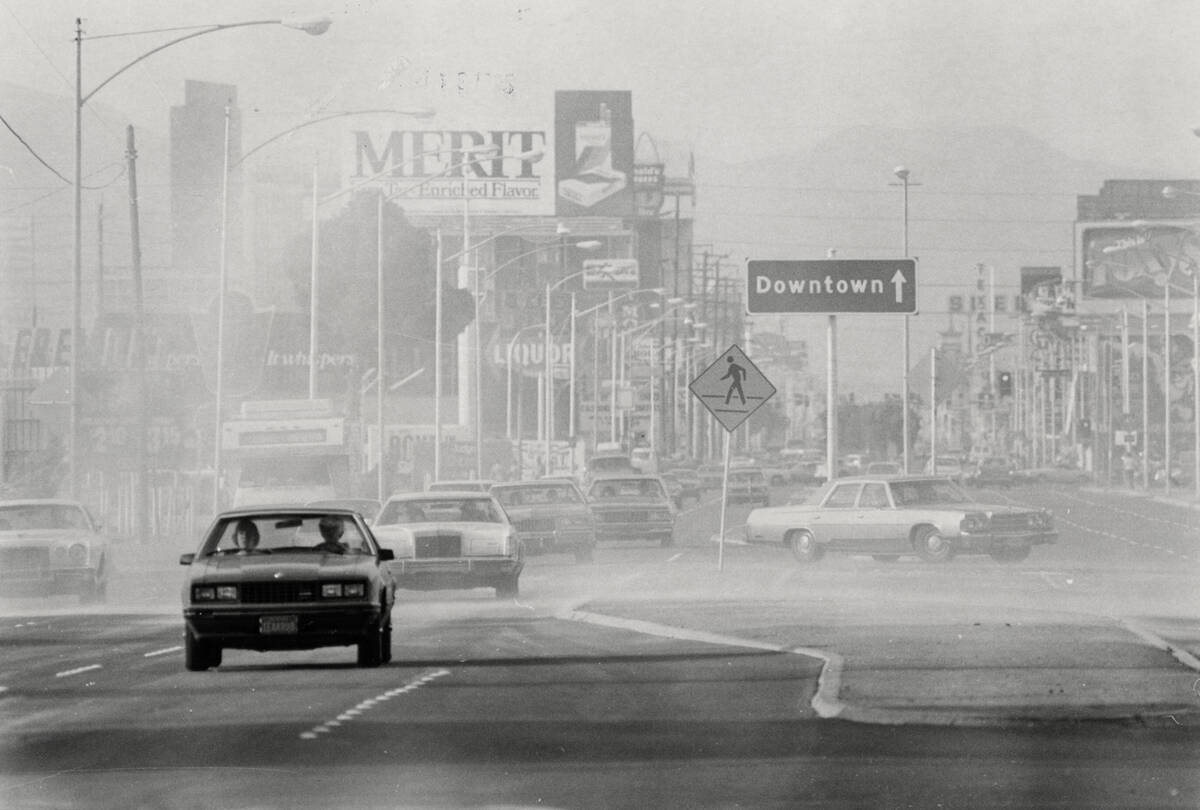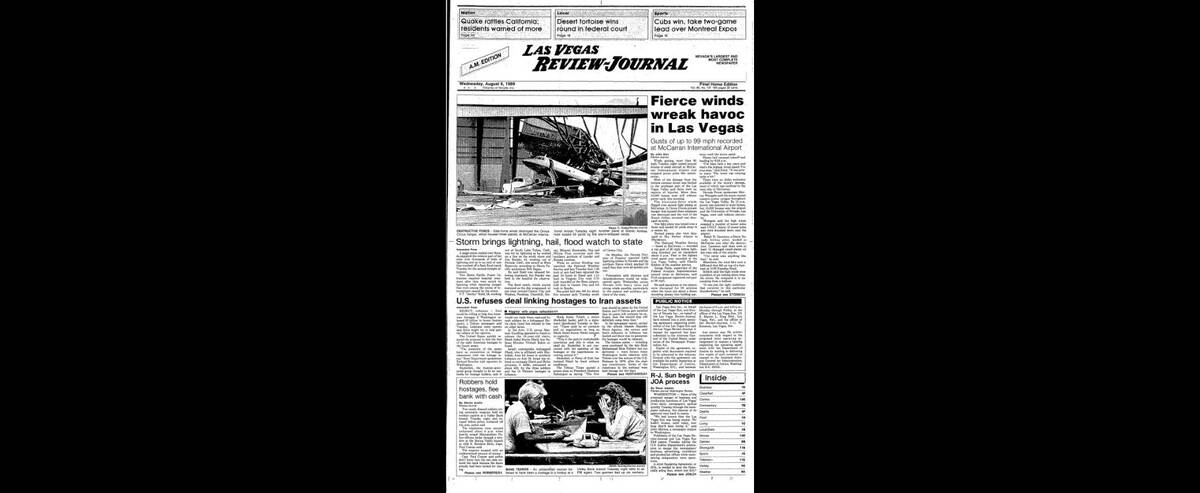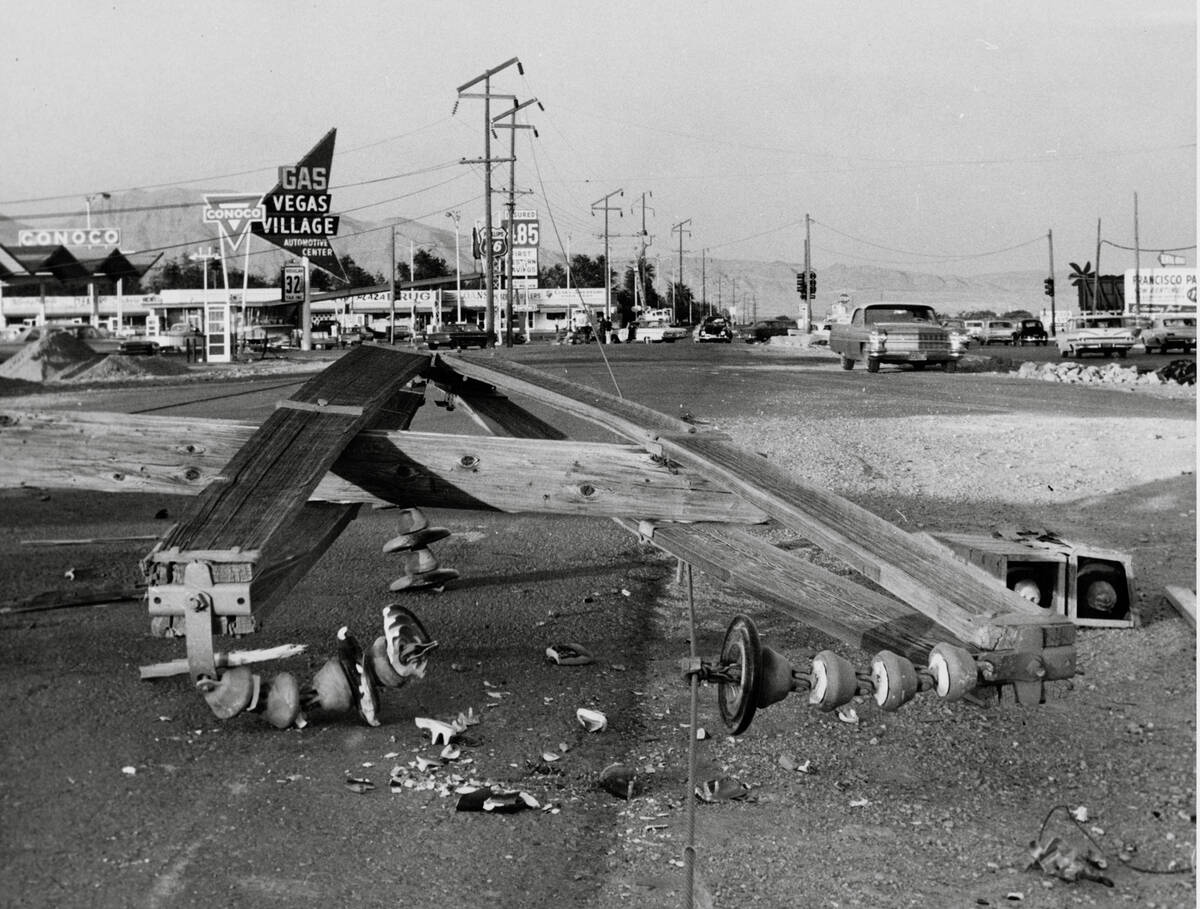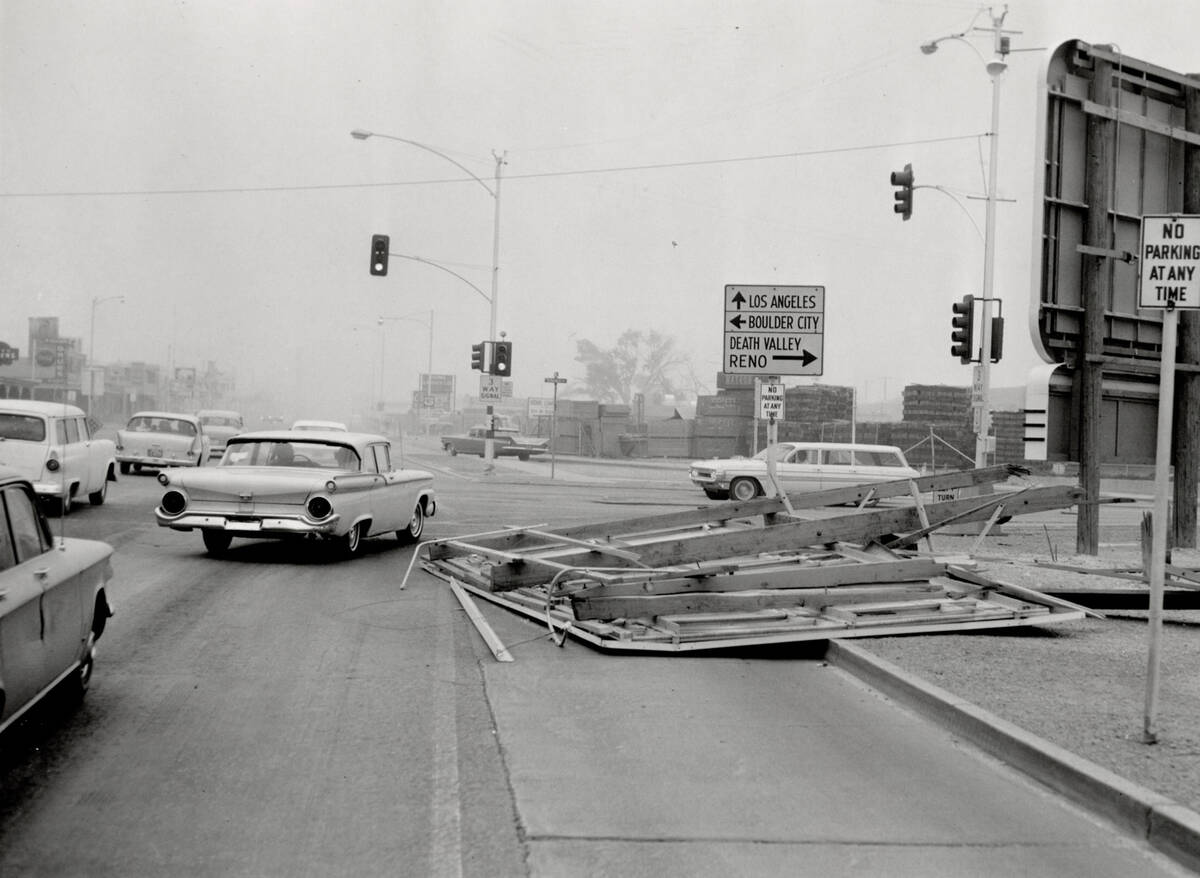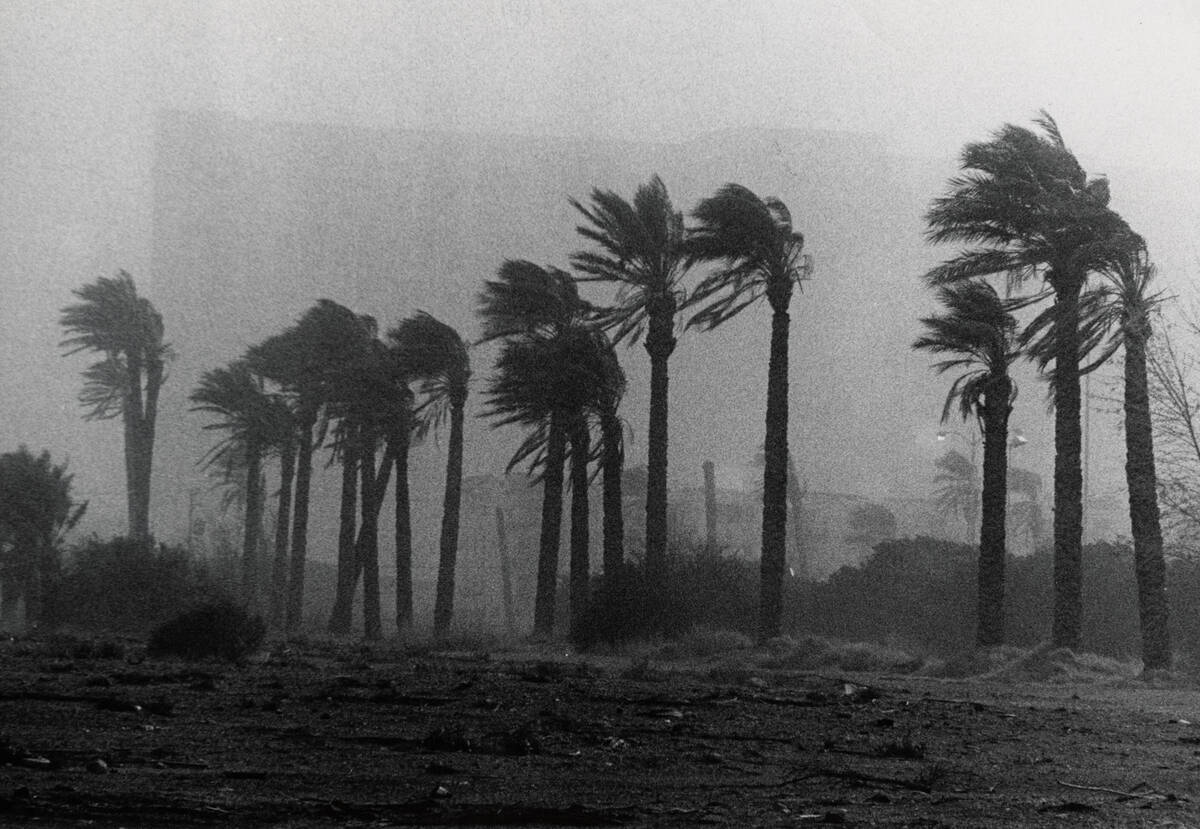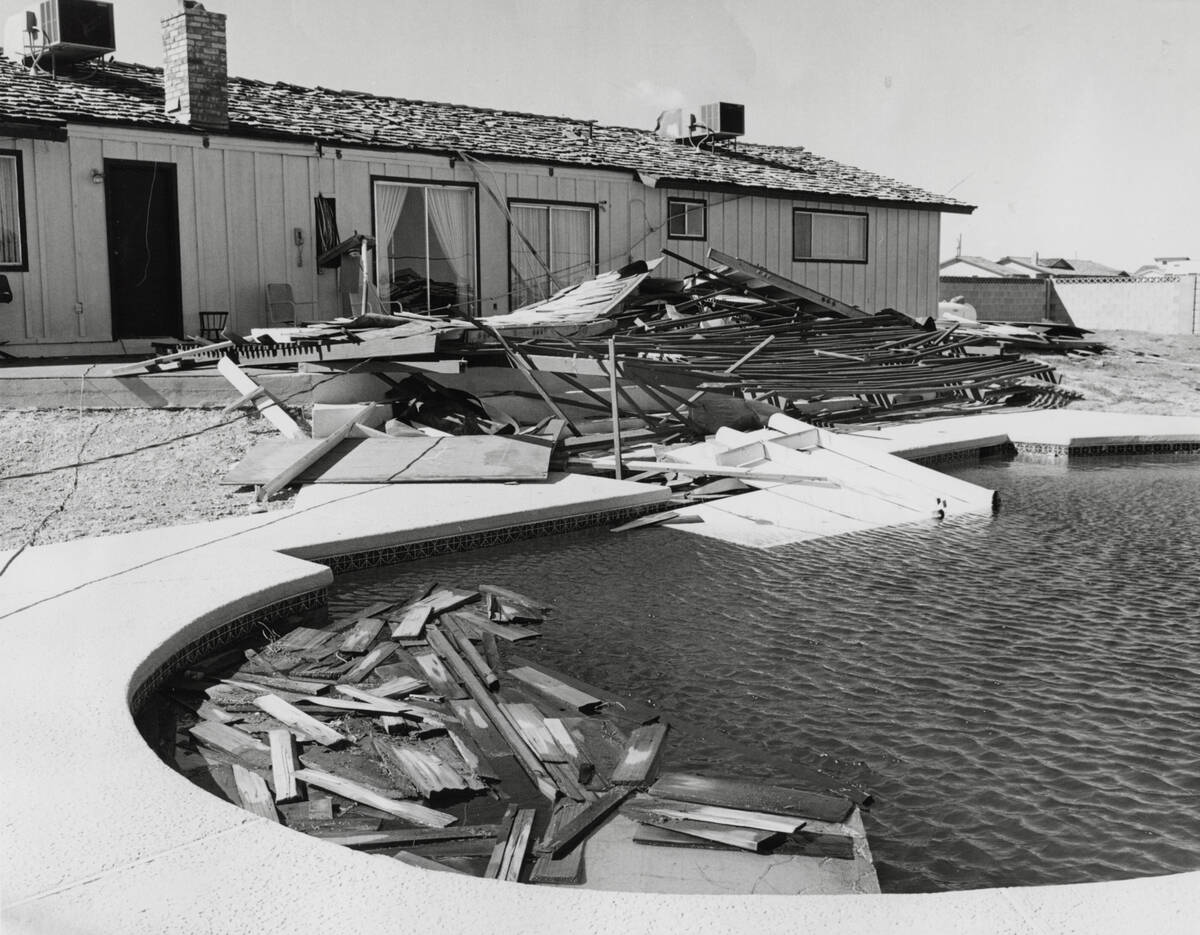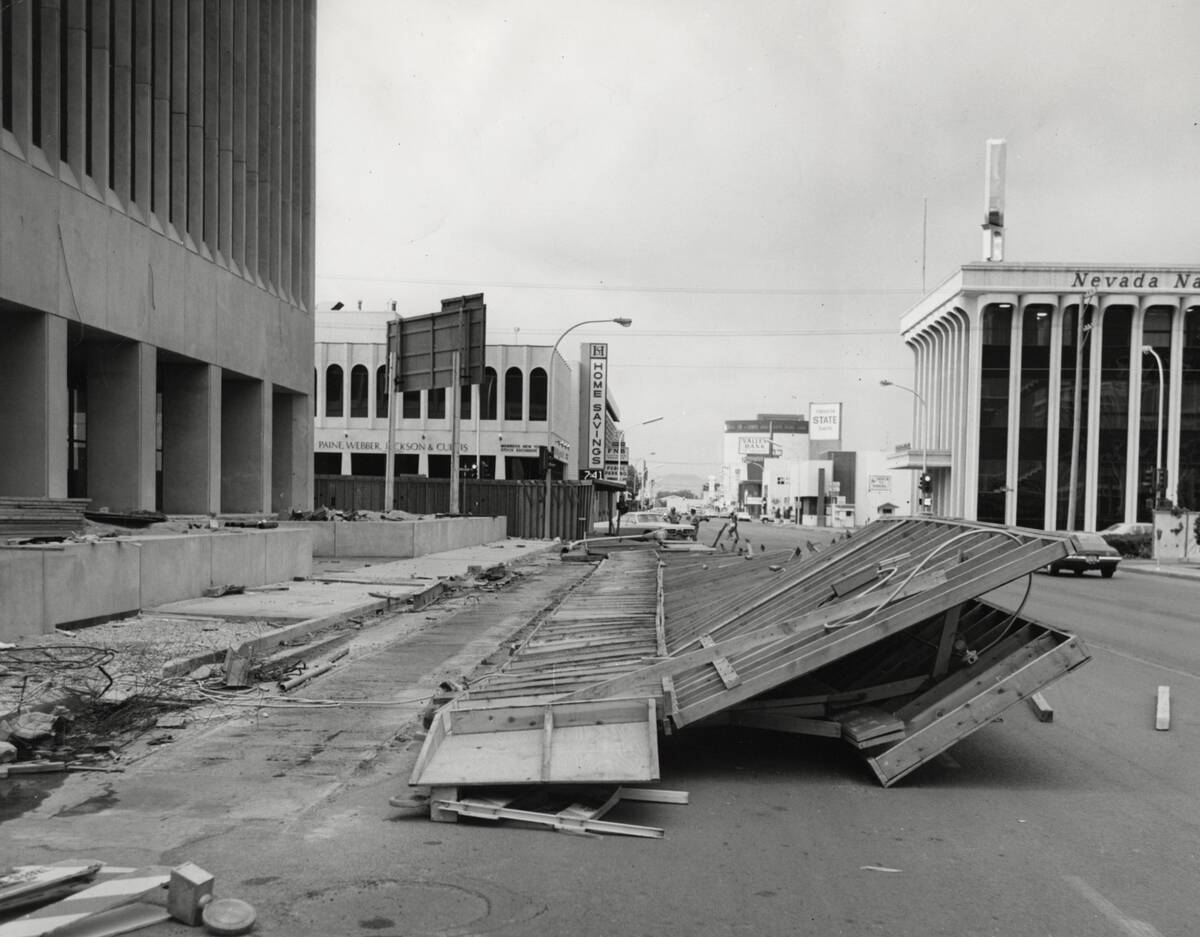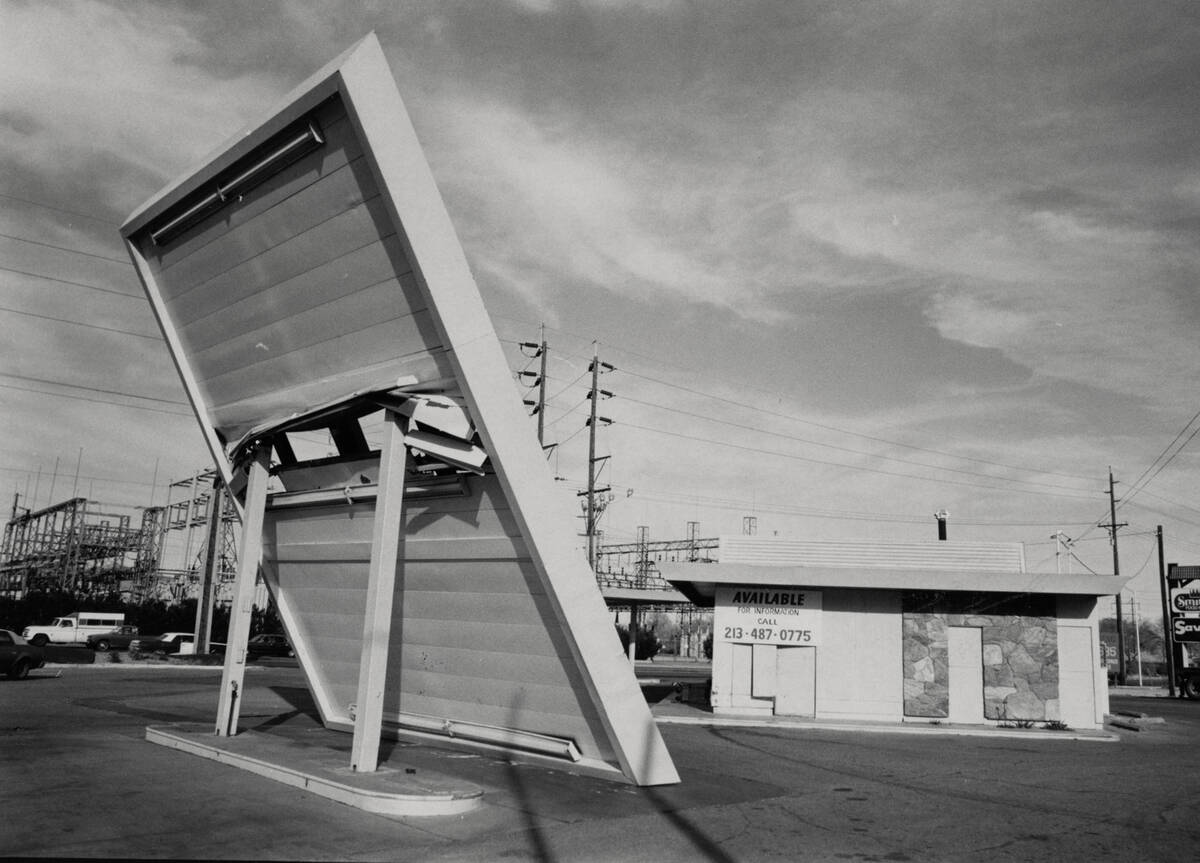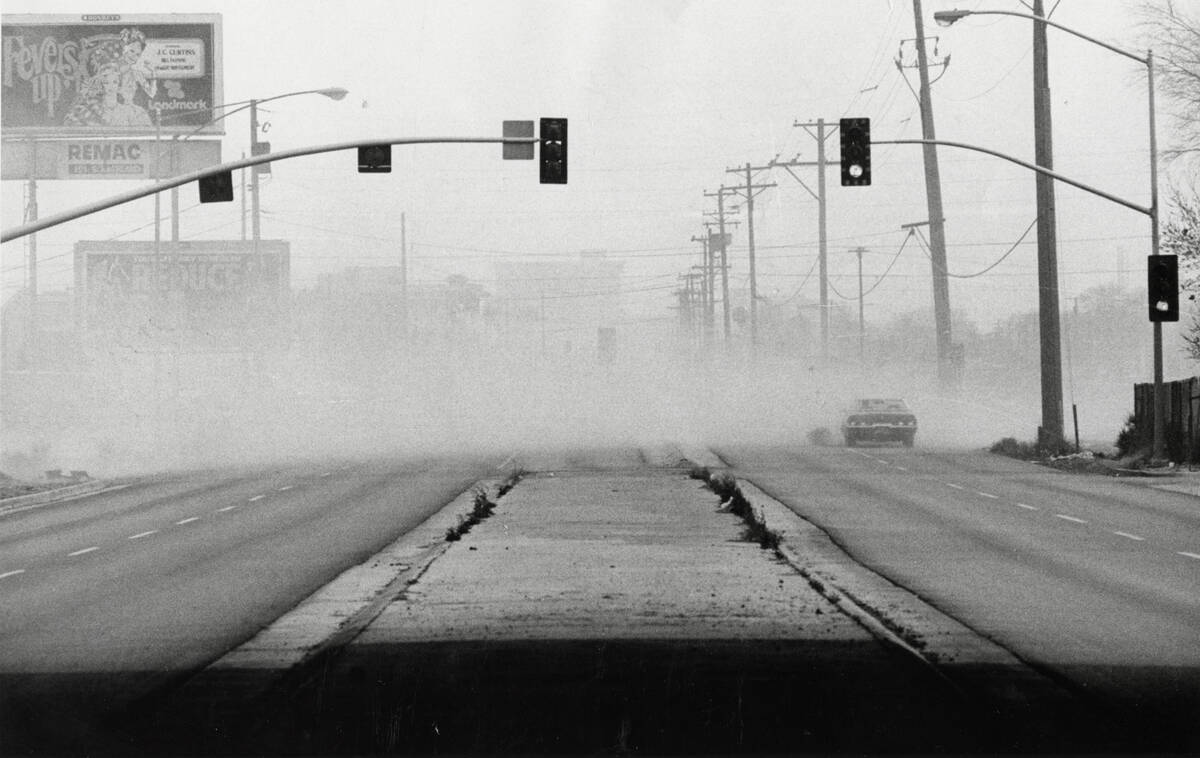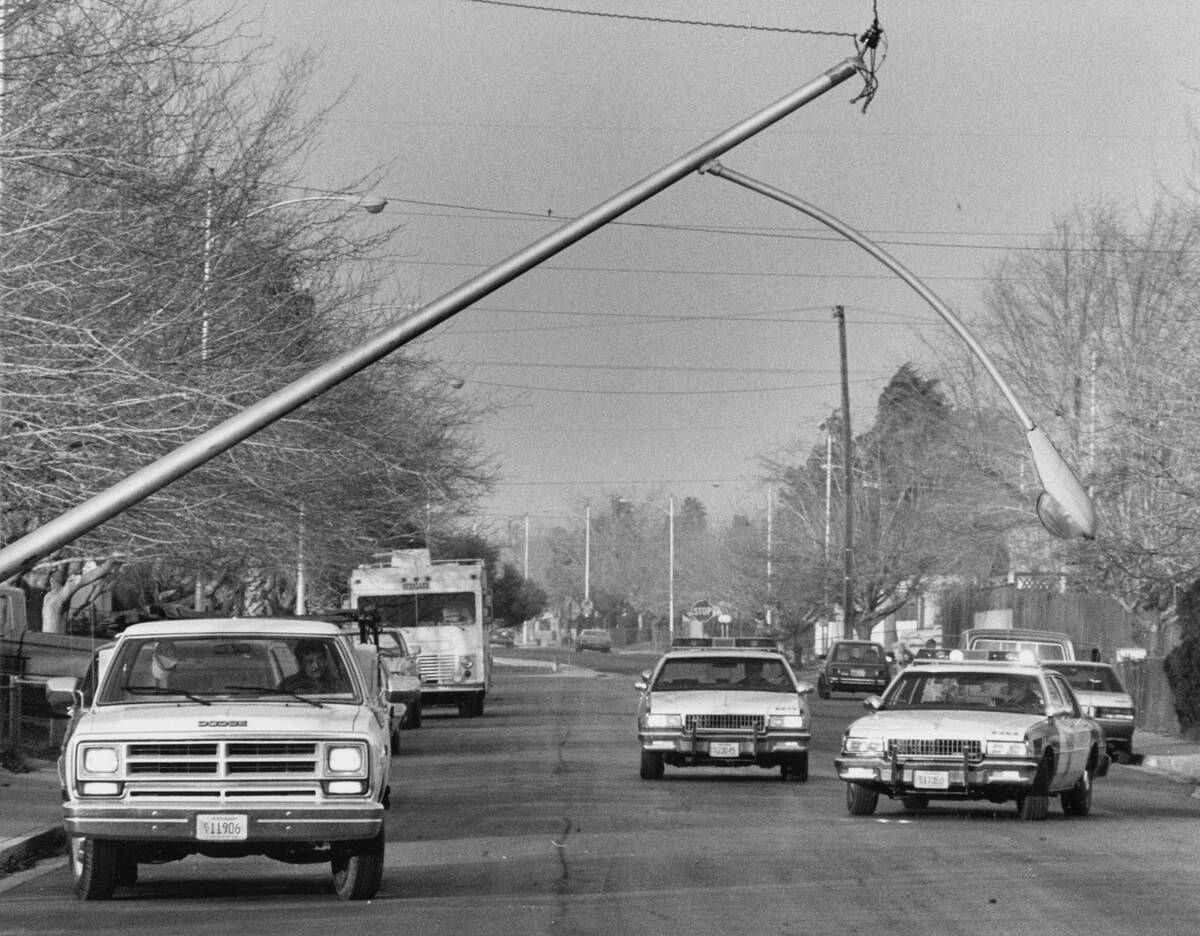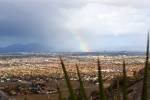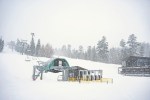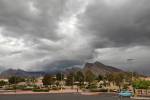A brief history of the windiest days in Las Vegas — PHOTOS
The last time the Las Vegas wind was this powerful in March, Ronald Reagan was president and Phil Collins’ “One More Night” was at the top of the charts.
Unfortunately, tragedy also struck.
When a 68 mph gust was measured at Harry Reid International Airport on Saturday, it was the strongest March gust recorded there since March 27, 1985, when the wind at the then-McCarran International Airport also hit 68 mph, according to the National Weather Service.
But in 1985 the wind appears to have been more dangerous. It picked up sand from a dry lake bed and caused near-zero visibility conditions for drivers on U.S. Highway 95 between Las Vegas and Searchlight, according to Las Vegas Review-Journal archives.
The result was two crashes on the highway that left a 64-year-old Utah woman dead and three people injured.
Fortunately, this past weekend, that kind of threat from wind-blown dust didn’t materialize, likely because of all the precipitation in Southern Nevada in recent weeks, forecasters said.
“We were lucky this time around,” said Andy Gorelow, a meteorologist with the National Weather Service’s Las Vegas forecast office.
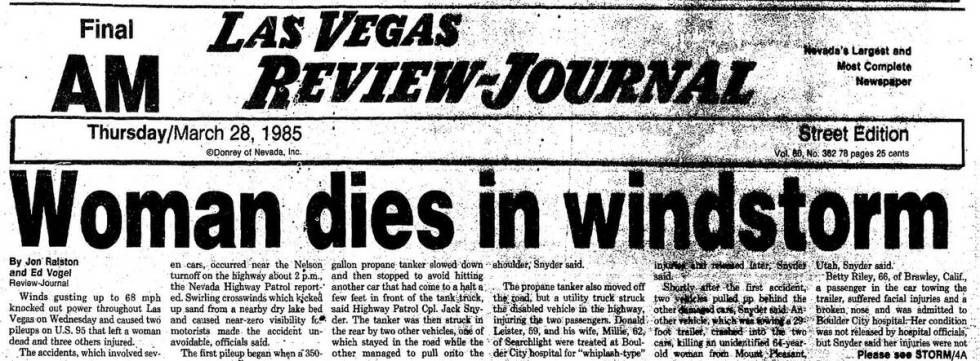
The winds that day also cut power to 5,900 homes. At the time, the Las Vegas metro area’s population was 608,000, according to the U.S. Geological Survey. That population now hovers above 2.3 million.
But the March 28, 1985, Review-Journal story of the wind damage also reported that the day’s winds were not a record for March. That record had been set the year before, on March 21, when gusts reached 82 mph.
An Associated Press story in the March 23, 1984, Review-Journal, headlined “Wicked winds whip across West,” reported that “(r)ecord-force winds howled up to 82 mph through the Las Vegas Valley on Wednesday night but no damage was reported and the wind had calmed by Thursday morning.”
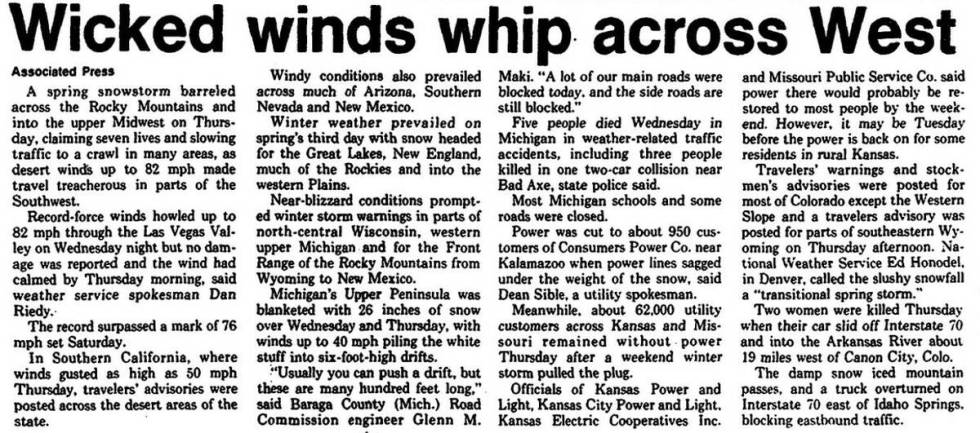
Those winds hit Vegas as a “spring snowstorm barreled across the Rocky Mountains and into the Upper Midwest on Thursday, claiming seven lives and slowing traffic to a crawl in areas,” with high winds also affecting parts of California, Arizona and New Mexico.
But these three March stretches of wind do not hold the record for most powerful wind in the history of Las Vegas, or at least, since records began being kept in 1951, said National Weather Service meteorologist Matt Woods, who works out of the Las Vegas forecast office.
The record was set on Aug. 8, 1989, when high winds associated with a thunderstorm hit 90 mph at then-McCarran Airport, Woods said.
“That is the highest wind speed ever recorded in the Las Vegas Valley,” according to the Aug. 9, 1989, Review-Journal.
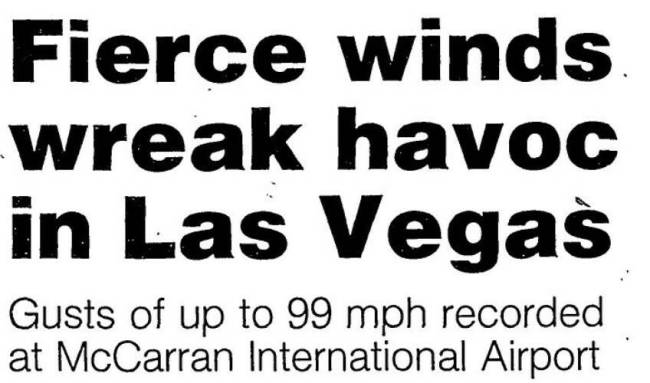
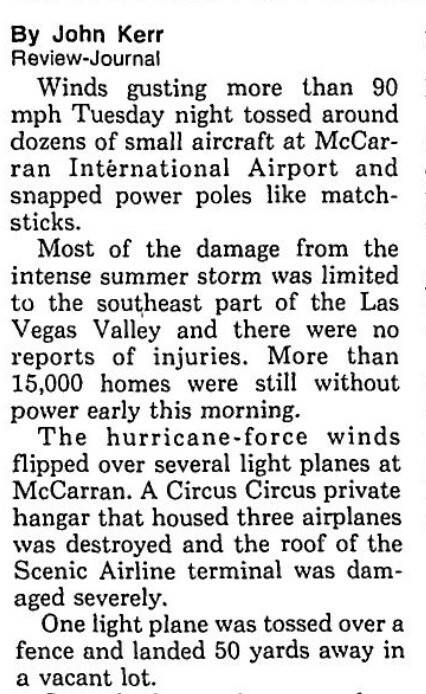
That day’s winds caused havoc. They “tossed around dozens of small aircraft at McCarran International Airport and snapped power poles like matchsticks,” the news organization reported.
The gusts destroyed a private hangar used by Circus Circus. One pilot who landed shortly after the destruction reported seeing at least 15 damaged small planes on the west side of the airport. One small plane was tossed over a fence and ended up in a vacant lot.
By 10 o’clock that Tuesday night, even though power had been restored to most affected homes, another 15,600 households near the airport and UNLV had no power, wrote John Kerr, who still works at the Review-Journal as the newspaper’s editorial page editor.
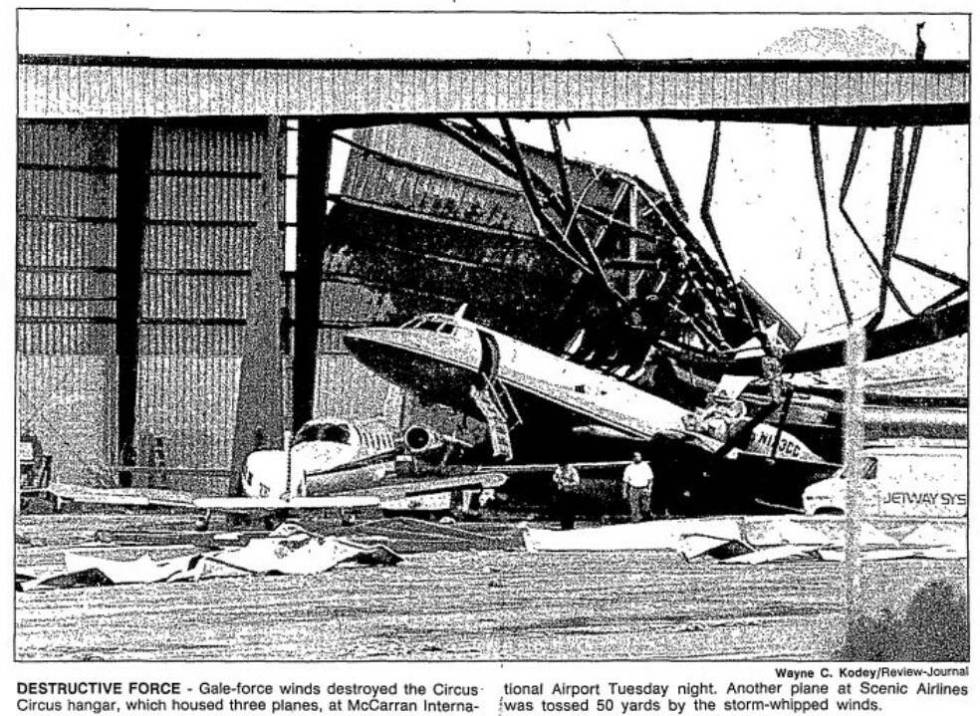
But the winds might have actually been stronger than 90 mph that stormy summer day. The 90 mph gust was measured by the National Weather Service before lightning knocked out their equipment at 6 p.m.
A supervisor of the Federal Aviation Administration’s McCarran control tower told the Review-Journal that the FAA equipment gauged one gust at 99 mph.
But almost 35 years later, that 99 mph claim, though known by meteorologists, is not considered an official record, Gorelow said.
This is because the National Weather Service documents official records with equipment that must be calibrated to certain specifications, Gorelow said.
For instance, the equipment that records wind gusts must be positioned at a certain height above the ground, he said. It’s not known where the FAA equipment referenced in the August 1989 RJ article would’ve been positioned.
But did the wind actually hit 99 mph that day? Maybe, but also maybe not, Gorelow indicated.
“It certainly is possible,” Gorelow said.
Contact Brett Clarkson at bclarkson@reviewjournal.com.



